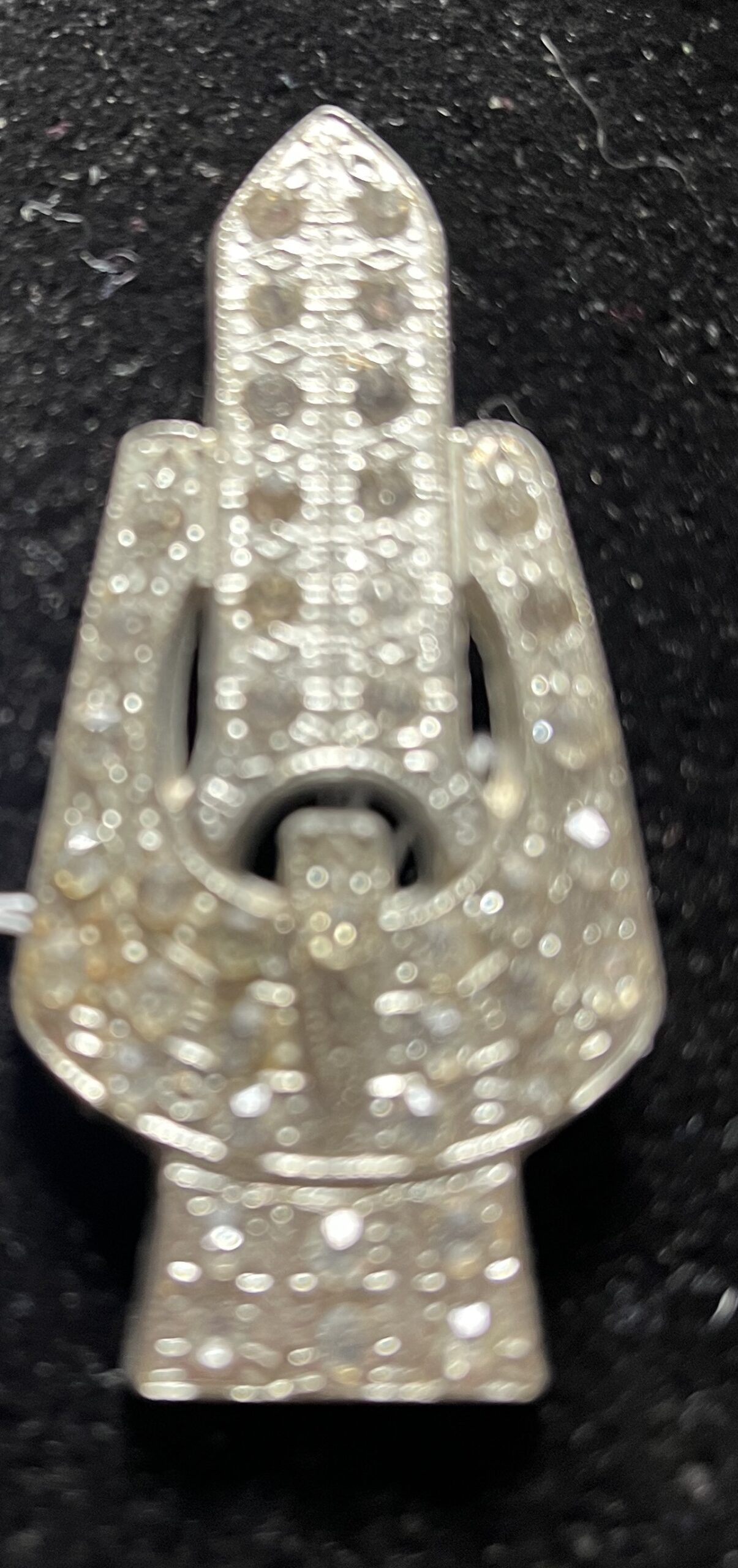Art Deco Costume and Fine Jewelry

Eat drink and be merry, are the words that encapsulated the roaring 1920s. Whether the people living in the decade between 1919 and 1930 were sculpting a new building, or creating a new jewelry design, the work was bold.
The 1920s were a time for huge change. Women could vote. Cars became the mode of transportation, versus the horse and carriage. The lightbulb extended the day. And while looking back, it is now history and seems rather old, at the time, it was new, transformative and fearless.
Crisp, geometric designs, layered patterns and bold colors were key trademarks for this era. It was like this in furniture, buildings and in jewelry, and fashion design.
It was like this for the wealthy who purchased fine jewelry made of diamonds, emeralds, and gold, and it was like this for the commoner who bought jewelry made of pot metal, silver, nickel and chrome.
The designs were bold, whether the jewelry used precious gemstones like sapphire and ruby, or rhinestones that looked the same because they bore the same colors, but were crystals instead.
Brooches used marcasite to emulate diamonds in costume jewelry design. Bracelets experimented with bakelite instead of silver, and necklaces tried colored glass instead of expensive gemstones.

Flappers were flappers regardless of income, and jewelry changed. Just as it does in every generation that has come before, the children who reached adulthood in the 1920s, were not about to emulate their parents style of jewelry prevalent in the 1800s. They wanted new designs. Times had changed.
Flappers still wore pearl necklaces, but they were long strands of pearls, that accentuated a figure, rather than the pearl necklace wrapped around the collar.
Fine jewelry and costume jewelry was still handcrafted, with care and attention to details, unlike a few generations later when necklaces, bracelets, rings and brooches were all mass produced, but the filagree designs popular during victorian days changed.
Geometric shapes were the primary shift. Look at some of the jewelry and you have to wonder were mathematicians, trained in geometry, the lead designers of art deco jewelry?
Paris in the 1920s, just as Paris does today, shaped jewelry designs, and common for the flappers were to wear 20 bangled bracelets on one arm. The women dressed as flappers, probably drove their parents nuts with all of the jingle and jangle. All that noise on one arm?
Art Deco Jewelry developed and created in the 1920s has transitioned from vintage jewelry, into the antique jewelry category. It is now 100 years old.
Art Deco Jewelry was a brief period of jewelry design in-between two world wars. The jewelry is highly collectible, whether it was made with fine gemstones and precious metals, like silver or gold, or costume jewelry, with varied colors of glass, and crystals, and pot belly metal, and brass and steel. It might be the most collectible of all jewelry designs, commanding some of the highest prices, of all jewelry categories.
It was created when modern styles replaced old with colors bright and bold, and lines clean and symmetrical took precedence over curvy filagree style. Times changed. It had a brief decade run, and because it was short lived, art deco jewelry is highly collectible.
Art Deco Jewelry was created during a time period when there were no limits to what could be done in fashion design. Money was no object, and new and bold, replaced intricate and old.
It’s not easy to find these pieces, as many have disappeared. Whether you are looking for costume or fine jewelry, discovering a necklace, bracelet, brooch, ring or even cufflinks, expect jewelry produced during this time period to increase rapidly in price as art deco jewelry continues to disappear.
Visit grandmasjewelry123.com to find costume and fine art deco jewelry pieces. The cufflinks shown above were produced in 1925 are 14k gold with diamond and sapphire and made for Tiffany’s department store, and can be found at grandmasjewelry123.com or at our ebay store.










